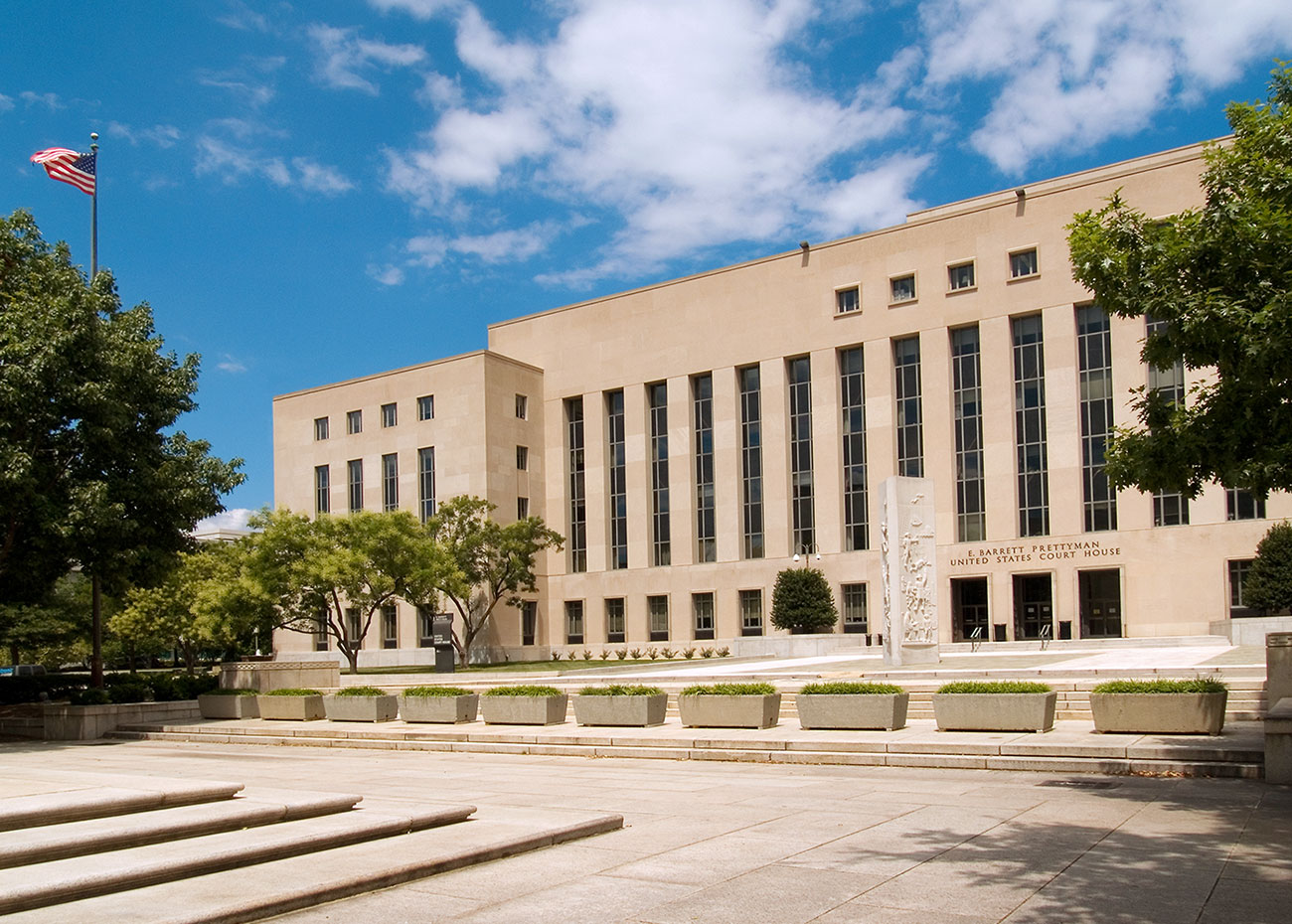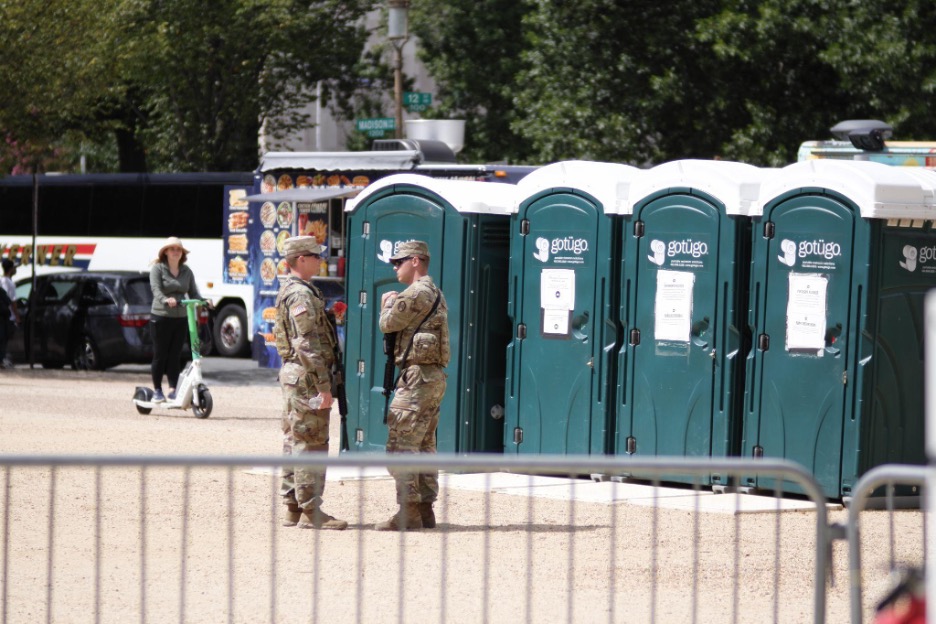Nationwide Injunctions Are a Bipartisan Problem

Published by The Lawfare Institute
in Cooperation With

On June 27, the Supreme Court ruled in Trump v. CASA, Inc. that nationwide injunctions must be limited to those necessary to protect parties before the court. While the ruling drew criticism from Trump opponents, the problem of nationwide injunctions is nothing new—and it reaches across partisan lines, frequently bearing on national security debates.
Judge shopping for nationwide injunctions has bedeviled the Obama, Biden, and both Trump administrations. Courts have enjoined, for example, Obama’s Deferred Action on Parents of Americans and Lawful Permanent Residents (DAPA) program as inconsistent with federal immigration law, Trump’s first travel ban (presented as a counterterrorism policy), and Biden’s attempt to end the Trump administration’s “Remain in Mexico” policy—each implicating national security, foreign affairs, and other important areas of executive discretion. Opponents of sitting presidents are able to virtually ensure that their suits end up before sympathetic judges who can impose provisional declarations of national policy that, if not overturned on appeal, compel the Supreme Court’s premature intervention on the emergency docket.
Empirical evidence strongly indicates a partisan skew to these injunctions: Between 2017 and 2025, 93.6 percent of national injunctions issued were issued by judges appointed by presidents of the opposing party. During the first 100 days of the second Trump administration, of 25 recorded national injunctions, 16 came from just three district courts—Maryland, D.C., and Massachusetts. The active benches on those three courts are overwhelmingly Democratic-appointed (90 percent, 73 percent, and 100 percent, respectively), underscoring the degree to which partisan judge shopping has become institutionalized.
The proliferation of nationwide injunctions has, in turn, conscripted the Supreme Court into resolving major policy disputes on its emergency docket, often with limited briefing and without a written opinion. This is bad for both parties, bad for sound government, and bad for the quality of the Court’s jurisprudence and, consequently, the law.
This problem operates across three distinct dimensions: judge shopping within district courts (including strategic refiling), circuit shopping, and premature nationalization of difficult legal issues. Both Republican- and Democratic-aligned litigants consistently exploit these mechanisms, demonstrating the widespread nature of this pathology, which is best conceived as a procedural quandary to be solved and not a partisan issue.
The Scope of the Problem
The first dimension is the ability of litigants to select single-judge (or simply small, politically homogeneous) divisions of district courts, knowing that in all likelihood their case will land before a sympathetic judge. In some cases, plaintiffs may exploit Federal Civil Rule 41(a)’s allowance of a single voluntary dismissal without prejudice—a practice the U.S. Court of Appeals for the Fifth Circuit has noted can enable forum shopping in district courts, especially in district courts that do not automatically reassign these cases to the original judge, a local practice that some but not all district courts have adopted.
The Amarillo mifepristone litigation is perhaps an extreme example: Anti-abortion groups filed in the Amarillo Division of the Northern District of Texas precisely because the division’s only active judge was Trump appointee Matthew Kacsmaryk, a former anti-abortion activist. The judge promptly issued a nationwide injunction suspending approval of the drug, which almost immediately conflicted with a contrary order from a Washington court requiring continued access. The result was not a coherent provisional national rule pending Supreme Court review but dueling injunctions, with federal law both halted and preserved depending on the courthouse.
The second dimension is venue shopping across districts—a practice incentivized by the national sweep of these injunctions. Unlike the intra-district manipulation described above, this practice turns on choosing the district in which to file in the first place. As noted, recent nationwide injunctions have clustered disproportionately in just a handful of courts, with Maryland, D.C., and Massachusetts generating the majority of such orders in the opening months of Trump’s second term. The experience of earlier administrations suggests a similar partisan logic: Challenges to Obama’s policies were concentrated in Texas, while opponents of the first Trump administration gravitated toward California. The common thread is that litigants file where the mix of judges is most favorable to their claims. So long as litigants can select districts where the bench is ideologically aligned, random assignment within a district will not blunt venue-shopping incentives.
The third dimension is premature nationalization of contested questions, or what might be termed a Mendoza problem. In United States v. Mendoza, the Supreme Court rejected the use of nonmutual collateral estoppel against the federal government because it would “substantially thwart the development of important questions of law by freezing the first final decision rendered on a particular legal issue.” Nationwide injunctions do just that by truncating, if not effectively foreclosing, the ordinary percolation of issues across circuits. One district court’s ruling effectively becomes a national directive, dragging the Court onto its emergency docket and distorting the doctrinal development that inter-circuit dialogue is meant to foster. As Justice Elena Kagan has warned, “It just can’t be right that one district judge can stop a nationwide policy in its tracks and leave it stopped for the years that it takes to go through the normal process.”
Evaluating Responses
The principal consideration in support of nationwide injunctions is eminently understandable: If an executive order applies across the country, then the harm it causes is necessarily national, and relief must be equally broad. But immediate national decisions are not how the U.S. judicial system generally works. Yale professor Jed Rubenfeld has noted nationwide injunctions should be reserved for the narrow class of cases where government action is clearly and unambiguously foreclosed by controlling Supreme Court precedent. The devil is in the application, for what may be popularly considered “clearly established” nonetheless often remains legitimately litigable to the government.
Other proposed reforms also fail to address all three of these dimensions and so fail to provide a durable solution. The Judicial Conference has attempted to curb the most blatant forms of judge shopping by adopting a policy of districtwide random assignment for cases that seek to mandate or modify federal or state government actions. That reform targets one critical corner of the problem: It prevents litigants from guaranteeing assignment to a single judge within a division or district. It does not, however, prevent venue shopping across districts or premature nationalization of contested questions.
Members of Congress have introduced a raft of proposals. The No Rogue Rulings Act, introduced by Rep. Darrell Issa (R-Calif.), would sharply curtail the authority of district courts to issue injunctions extending beyond the parties, except when two or more states in different circuits sue together, in which case a randomly selected three-judge panel could issue broader relief. Sen. Josh Hawley (R-Mo.)’s Nationwide Injunction Abuse Prevention Act goes further, seeking to bar nationwide decrees altogether. Meanwhile, the End Judge Shopping Act, introduced by Sen. Chuck Schumer (D-N.Y.), focuses narrowly on preventing nationwide relief from single-judge divisions by mandating random assignment only in such cases.
Each of these bills addresses part of the problem, but none addresses all three dimensions we identify. They amount to partial fixes, and they risk simply redirecting litigants toward whatever loopholes remain. Entirely precluding national relief goes too far: While individual district court judges should not be able to effectively dictate or undo national policy, there does need to be a measured outlet for appropriate, relatively prompt judicial review of executive action having a nationwide sweep—especially as congressional inaction has fueled growth in both the number and the scope of executive orders and judicial corrective measures.
In Trump v. CASA, Inc., the Supreme Court took a more direct step. It curtailed nationwide injunctions at the behest of nonparties—recognizing that individuals who are not bound by a judgment should not automatically benefit from a district court’s universal order. But the Court left open two significant exceptions: nationwide class actions and suits brought by state attorneys general. These carve-outs preserve many of the incentives for forum shopping, amounting to old wine in new bottles. Judges inclined toward broad relief have already shown a willingness to certify classes at very early stages of litigation, sometimes even including future claimants. While it is unclear precisely how CASA will impact this landscape, there are hints of a more laissez-faire approach to Civil Rule 23(b)(2) certification since the decision was handed down.
State attorneys general litigation poses its own risks: A nationwide injunction can effectively be achieved whenever a coalition of attorneys general sues in a favorable forum. The Supreme Court’s original jurisdiction over interstate disputes could serve to avoid lower-court litigation and forum shopping and provide a centralized forum for resolution of such cases, though not without raising serious risks of overloading the Supreme Court’s docket (a key justification for the creation of the federal courts of appeals in the first place) and questions surrounding the suitability of the Court for fact-finding without reliance on special masters and attendant lengthy proceedings.
A Three-Step Proposal
Piecemeal reforms will not solve the problem. What is needed is a structural change that restores the benefits of percolation while still allowing meaningful checks on executive overreach. The principle is not novel. Congress embraced it with the Evarts Act, creating the courts of appeals in part so that difficult questions could be tested regionally before reaching the Supreme Court. As we note above, the Supreme Court echoed this same concern in Mendoza. In short, easy access to national injunctions (from the ruling of one district court) ultimately makes for worse law.
Our three-step proposal builds on that principle. First, district-wide random assignments should be bolstered by curbing rules that permit a party one voluntary dismissal without prejudice.
Second, broader relief should also no longer hinge on a single trial court. Any injunction against federal or state government action should be subject to immediate review by the court of appeals, and its reach should be confined geographically to that circuit. District judges could still grant party-specific relief, but circuit-limited injunctions would ensure that unsettled questions receive fuller treatment before they are nationalized.
Third, to prevent endless relitigation, once two circuits have reached the same result the government should be required to seek certiorari rather than continuing to test the issue elsewhere. At that point, the value of further percolation has been given its due, and what remains is likely strategic delay. Once the Supreme Court has granted review, it can decide whether to stay further litigation by the government outside of those circuits. Relief against unlawful executive action would remain available but be geographically confined until multiple appellate courts concur. A similar concern animated Estreicher and Revesz’s defense of agency nonacquiescence: Forcing the federal government to conform nationally to the first adverse ruling sacrifices the benefits of intercircuit dialogue and sound doctrinal development. Congress has confronted this problem before: 42 U.S.C. § 2284 requires three-judge district courts in certain cases, with direct appeal to the Supreme Court. For decades, that provision went much further than it does today: Until 1976, three-judge courts were mandatory in any suit seeking to enjoin the enforcement of state or federal statutes on constitutional grounds—with the straightforward premise that when a federal court is asked to enjoin executive action or the enforcement of a duly enacted law, the matter is too important to be left to a single, hand-picked district judge. Congress later narrowed § 2284 to conserve judicial resources, confining it mainly to redistricting and reapportionment cases. But its earlier breadth shows that the instinct behind our proposal is hardly novel.
Circuit-limited injunctions, implemented through rulemaking or statutory change, would reduce incentives for venue shopping, ease the burden on the Court’s emergency docket, and restore the judiciary’s legitimacy by ensuring that national policy reflects more than the will of one carefully chosen judge, with Supreme Court review to follow once there has been a decent opportunity for intercircuit dialogue and doctrinal development.
This is not just a procedural squabble or abstract doctrinal question. The means by which these orders are challenged shapes the development of the law, the contours of executive power, and the government’s ability to act with coherence in areas ranging from abortion access to immigration and national security. A single district judge should not be empowered to derail federal policy nationwide, leaving the executive caught between dueling orders and the Supreme Court’s ever-expanding emergency docket. Circuit-limited injunctions would restore balance: They preserve meaningful checks on executive action, but through a process that fosters intercircuit dialogue, curbs gamesmanship, and gives the Court space to decide weighty questions in the ordinary course.





